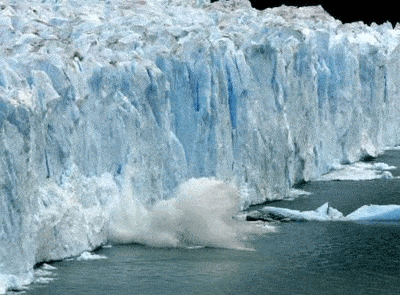
(This is my article published in the news magazine for the HVAC industry “The News” on 10/05/2015)
Two points of view about climate change were covered in the May 18 and June 22 issues. The first argued there is a crisis caused by man-made global warming. The second asserted that global warming is not man-made and isn’t even a concern. What if there is a third perspective that could actually make the other two points of view align rather than conflict?
Statistically Speaking
In my previous life, I taught statistics to corporate audiences. We look at snapshots in time and trends over time. We take that data and analyze it to make good decisions. That’s the idea anyway.
Climate change data shows that, yes, there is a change over time; the temperatures are rising, and ice caps are melting. I appreciate reality rather than projections, and the most compelling information I’ve seen is presented by James Balog in an actual time lapse presentation. But, is the change statistically significant? A fundamental concept to statistics is that there is variation in everything. That includes temperatures and polar ice caps. As long as variation stays within a reasonable and consistent tolerance over time, and without unusual patterns, the change isn’t statistically significant.
According to NASA’s website: “All three major global surface temperature reconstructions show that Earth has warmed since 1880. Most of this warming has occurred since the 1970s, with the 20 warmest years having occurred since 1981 and with all 10 of the warmest years occurring in the past 12 years.”
Based on standard statistical tests, there is statistical significance. According to an analysis including 2014 data: “A climate central analysis showed that 13 of the 15 warmest years have occurred since 2000, and the odds of that happening randomly without the boost of global warming was 1 in 27 million.”
The timeframe makes a difference in analysis, as well. Temperature data wasn’t available in previous years, but a longer-term view is seen at NASA’s website showing the change in carbon dioxide over 650,000 years.
But, is there manmade cause and effect, To really prove cause and effect, you collect new data under the different scenarios, varying all of the causes you can think of. When you control the inputs, you can see if the outputs change consistently with the state of the inputs.
Since we can’t actually control the inputs in the global warming experiment, this is where we get into a pointless tug of war of opinions. Lots of energy expended, but no movement.
Living Efficiently
This is the first paragraph in a chapter of my book, “Beyond Light Bulbs: Lighting the Way to Smarter Energy Management.”
“Is there global warming or not? Is it caused by humans or by natural phenomena? Is that really the point? I finally thought, ‘Who cares?’ Rather than wasting our human energy debating this, why not use that energy to find ways to be more efficient with the Earth’s energy? Why not find ways to reduce emissions so that we have good air quality, regardless of how our current problems were created?”
Focusing on problems can stop movement. What if we looked at global warming differently? Sure, there is global warming or climate change, and it isn’t a problem. The reason it isn’t a problem is because we’re smart enough to reduce the consumption of the Earth’s resources — not just because of climate change or in spite of climate change, but because it doesn’t make sense to use up resources if we don’t have to.
As HVAC contractors, we have the ability — and I would assert we have the responsibility — to use our expertise to find ways to reduce the consumption of electricity in the buildings we service and to come up with more efficient ways to heat and cool our buildings. If we make that our collective goal, we can pull together toward a better future.
As businesspeople, we can also look at how adding value to our customers can increase our bottom lines.
We all know the most efficient equipment made won’t provide its rated efficiency if the ductwork is leaky or sized incorrectly. Here’s an opportunity to make money by providing value to the customer while reducing electricity demand and its impacts.
When we started our company, we tested the leakiness of our own ductwork using duct testing equipment. We had 65 percent duct leakage — we were air conditioning the attic! Sealing the ductwork caused a perceptible difference in the amount of air coming out of the registers and in our energy bills.
Flexible ductwork gets destroyed by critters and degrades over time. Even if a building has metal ductwork, if the joints aren’t sealed, there is leakage. Tape pulls away, and we find countless systems with no visible mastic at all. Sealing or replacing ductwork fixes this.
In addition, we find buildings where ductwork is sized incorrectly. We’re working with a 9,000square-foot doctor’s office that has supplies that are half the size they should be. The system is choking, and it’s been this way for 30 years. A duct-replacement job can provide comparable revenue and value to a system replacement job. It can increase comfort, reduce electricity bills, and create happier customers.
Rather than pulling against each other, we can align to a common purpose of reducing electricity consumption, and all can win — the customer, the contractor, and the community via less emissions and better air quality.
The mission of our company, Go Green Squads, is to reduce unnecessary energy use in central Texas and beyond. Surely, this is a goal everyone can enroll in, whether they believe in climate change or not.
Publication date: 10/05/2015 Join T h e N E W S on Facebook, Twitter, and LinkedIn
I’m adding this because it reinforces my article. There no longer needs to be a divide. Forget the Red/Blue Divide on Energy .
